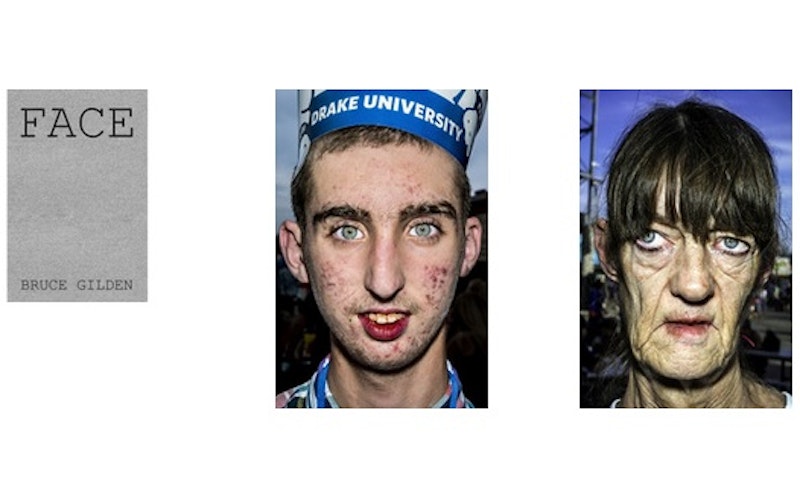
Culture At Large
Instead of Facebook, a book of faces
A book of photographs titled Face elicits obvious comparisons to the social media giant. The latest from photographer Bruce Gilden, the collection of portraits might be more appropriately titled Mug Shot. If these folks filled your Facebook news feed with selfies, you’d probably be tempted to click the “hide” option.
In a world overflowing with Photoshopped and filtered images, Face stops our scrolling in its tracks and makes us evaluate exactly what it is we’re seeking. The 50 subjects in Gilden’s project aren’t beautiful by conventional standards; depending on your own definition of beauty, they may be occasionally repulsive. His technique of the extreme close-up serves to highlight everything that is blemished, misshapen and grotesque in each face.
On his website Gilden declares, “I’m known for taking pictures very close, and the older I get, the closer I get.” Since he first picked up a camera in the 1960s, the photographer has followed his fascination with overlooked and ignored individuals to places like Brooklyn, Miami, Bogota and Haiti. In a recent Slate interview, he said, “I always photograph what’s interesting to me and it has always been people who are underdogs because I see myself as an underdog.”
To be honest, I had a hard time looking at the images in Face. As I observed them on the screen of my large office monitor, my co-worker exclaimed, “What are you looking at?” and immediately walked away. Gilden’s artistic method provokes this dilemma for the viewer: do I keep looking or do I walk away?
My office mate’s frank appraisal helped me articulate my own irritation. In the end, I resisted the impulse to look away because I’ve learned that the very things that cause me discomfort usually deserve a second look. None other than Jesus was described by the prophet Isaiah as having nothing attractive about him, “no beauty that we should desire him.” Jesus saw and touched and socialized with the pockmarked people he encountered. Whether he means them to or not, Gilden’s photographs put that Christian truth before our faces.
In a world overflowing with Photoshopped and filtered images, Face stops our scrolling in its tracks.
Coincidentally, a few days before discovering Face I’d filtered my entire Facebook feed to display only the friends and images I wanted to see at any given time. I patted myself on the back for creating a group that only includes friends who share a similar, social-media aesthetic. If Bruce Gilden and I were Facebook friends, his photos would not make it into that group.
In the onslaught of images people choose to share online, a bit of filtering might not be such a bad idea. The problem arrives when I choose to let that filter extend beyond the virtual realm and into my everyday life - throughout my neighborhood, office and city.
Christians, after all, live in a story of delight and deformity, every mark a reminder of what was and is and is to come. We follow the God who became disfigured to heal our disfigurement. Artists like Bruce Gilden push against the fallen instinct to shield ourselves from the uncomfortable realities around us and within us. The subjects in Face give us a gift by exposing - up close and in full color - their vulnerability. To meet them is to know their stories, raw and unfiltered.
The people in these photographs remind me of the concluding lines in a Gerard Manley Hopkins’ poem:
— for Christ plays in ten thousand places,
Lovely in limbs, and lovely in eyes not his
To the Father through the features of men's faces.
Bruce Gilden’s work states the same arresting truth: unfiltered faces tell a story too important to ignore. Indeed, we risk missing Christ Himself.
Topics: Culture At Large, Arts & Leisure, Books, Art, Theology & The Church, Theology